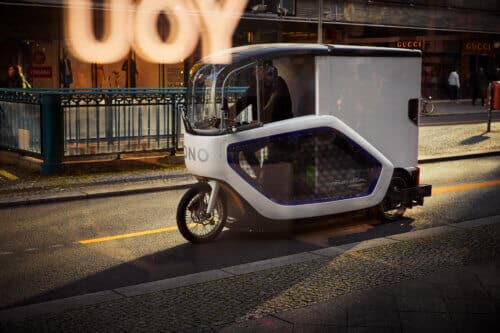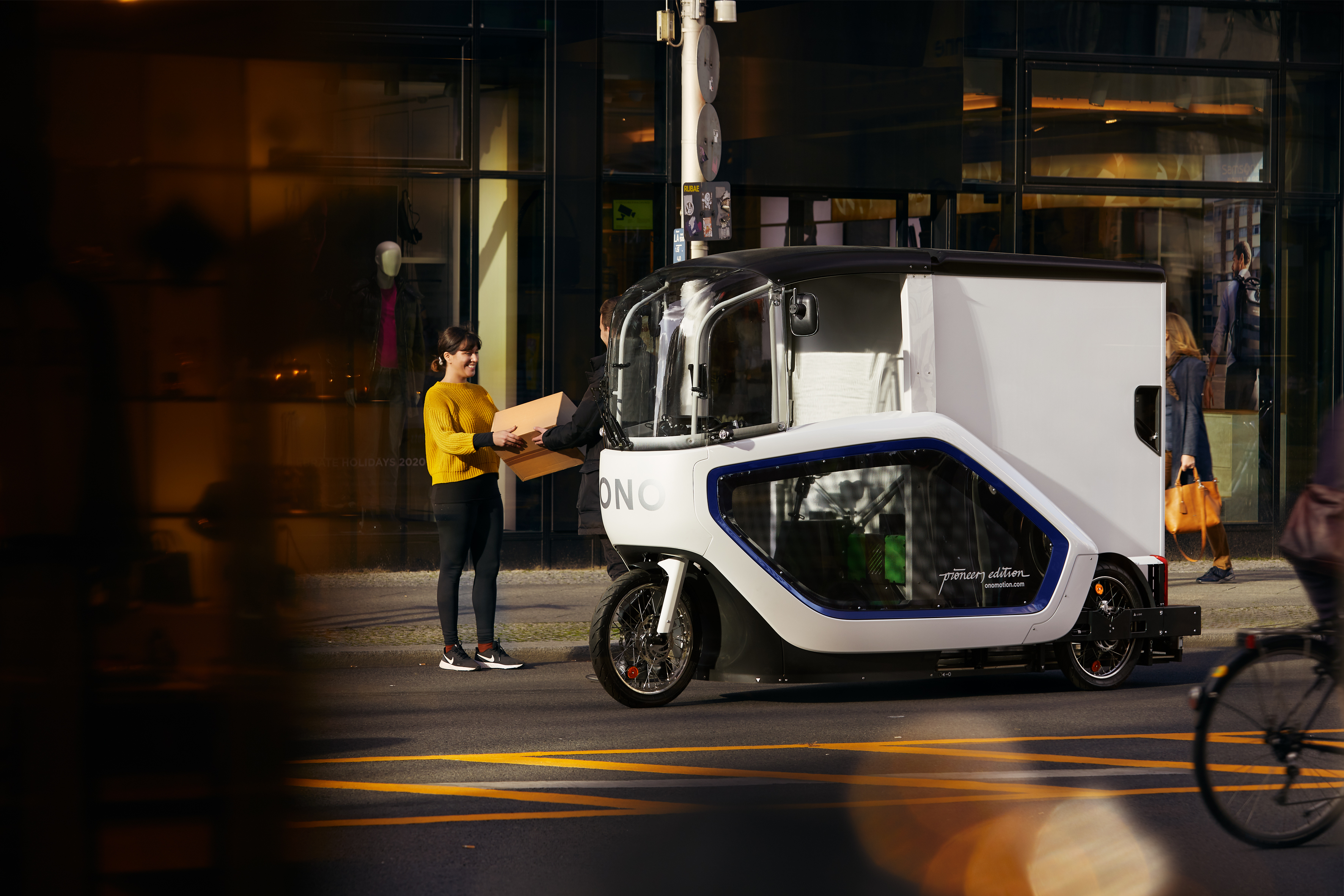A German startup called ONO Launched a new model of electric delivery vehicle in Berlin with the aim of solving the problems posed by existing delivery vehicles: huge carbon footprint
By Liron Dana, Angle - Science and Environment News Agency
After an intense month of global shopping celebration, which started with shopping.il-, continued to Chinese Singles Day, Black Friday and ended, temporarily, on Cyber Monday, all we have left is to sit at home and wait for deliveries to arrive at our door.
The ease with which ordering products from the chain saves us a lot of time and effort, but it also entails the environmental cost involved in transporting the shipments from the warehouse to the consumer: a huge fleet of commercial delivery vehicles, cargo planes and ships transports our products from place to place, creating traffic congestion and leaving behind a trail of Pollutant emissions that harm air quality and human health and accelerate the climate change process.
according to Report published this year by World Economic Forum (WEF), by 2030 the number of delivery vehicles in the 100 largest cities in the world is expected to increase by 36 percent, carbon dioxide emissions from delivery vehicles are expected to increase by 32 percent and traffic congestion is expected to increase by 21 percent as a result of the use of these vehicles.
Therefore, a German startup called ONO Launched in Berlin a new model of an electric delivery vehicle with the aim of solving the problems posed by the existing delivery vehicles. At first glance, the new vehicle looks like a compact truck, but in fact it is a powerful electric bicycle, which moves (by pedaling or by means of an electric motor) on three wheels. The great advantage of using this vehicle is in avoiding the use of fossil fuels and therefore in reducing the emissions of greenhouse gases that are emitted by burning those fuels, as well as in reducing the emissions of air pollutants that are emitted from burning fuels near and within metropolises and population centers (the larger a share of the electricity is produced from renewable energies at the expense of fossil fuels, the more they will increase The environmental benefits, primarily the improvement of air quality and the reduction of greenhouse gas emissions). According to the company, its carbon footprint is reduced by no less than 50 percent compared to an average delivery vehicle with a diesel engine.

Other large delivery companies are also developing electric delivery vehicles, but they are expected to be about the size of a commercial truck. ONO's vehicle is four times smaller than a commercial vehicle, so it is able to move quickly through busy city streets, avoid heavy traffic, avoid lengthy parking searches and stop on the side of the road to unload goods. In the cities where ONO vehicles will operate, stations will be established that concentrate goods, to which the vehicles can reach and load goods quickly.
A matter of environmental efficiency
"Vehicles are the main source of air pollution in cities, more than power plants and industry," says Amir Salzberg, director of the transportation division at the Ministry of Environmental Protection. "The main problem is with vehicles powered by diesel engines (diesel, diesel), and today all delivery and distribution vehicles are powered by diesel. Diesel fuel has been proven to be carcinogenic to humans and the cause of a wide variety of heart diseases, lung diseases and more. A solution of using an electric delivery vehicle, which does not produce direct emissions from burning fuel, is a very effective means of improving air quality in cities."
As mentioned, replacing vehicles with an internal combustion engine with electric vehicles will also help in dealing with the climate crisis, because as of 2013 the transportation sector was responsible for about 15 percent Total greenhouse gas emissions In the world and private cars were responsible for almost a quarter of the annual fuel consumption in the world. Many countries are encouraging an environmental policy that will require a transition to electric vehicles, and in Israel the Ministry of Energy has also announced a goal of exceeding 30 percent renewable energies by 2030 which was approved by the government at the end of last October.
Another environmental advantage of an ONO vehicle is the ideal match between the size of the transport and the size of the goods, which can lead to significant energy savings. "It's a matter of basic efficiency. When a truck that weighs four tons is used to transport goods of less than a ton, it causes a waste of energy. When you adapt the transport of small products to small electrically driven vehicles, you can save a lot of energy," explains Salzberg.
But there is also a significant challenge in the use of electric vehicles today. The electric battery in ONO vehicles has a declared range of 30 km and is also replaceable during the workday, but like any battery, it has a limited number of charging cycles. After them, the lithium-ion battery goes out of use and becomes non-recyclable waste.
"Used lithium-ion batteries have no answer today in the waste of hazardous materials in Israel. Currently, there are few recycling plants in the world and their technology is very expensive," adds Salzberg. "I have no doubt that as there is a larger market for electric vehicles in Israel, there will also be a large enough amount of batteries to justify the establishment of such a recycling plant. Our role as a government is to prepare in advance and promote the establishment of recycling plants that know how to respond to this problem."

Electric transportation in Israel
ONO's vehicles hit the roads in Berlin this month and in the next five years their distribution is planned in 60 other cities in the world. In Israel it appears that it will take some time before we see a car of this type on the roads.
"In such a delivery vehicle there are challenges related to traffic - a vehicle that travels on bicycle paths and sidewalks may harm the safety level of the driver and pedestrians. There is also a financial challenge - it is cheaper to transport goods in diesel trucks, so significant government involvement is needed for them to use such a vehicle," says Salzberg.
"As a government, we must focus our efforts and first of all electrify public transportation. Then use electric vehicles for the transport and distribution of goods and only finally switch to electric private vehicles. Public transportation serves a lot of people and is the most sustainable form of transportation, so it is important that it is also the cleanest," adds Salzberg. "Today there are already dozens of models of electric buses and the supply in the market is quite wide, so the prices are also falling. The topic of transporting goods is young and there is still room for technological development so that the prices will also decrease. I have no doubt that electric delivery vehicles will reach the roads in Israel, but there is no telling when that will happen."
the post Electric dispatch appeared first onangle
